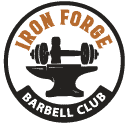Join 2,000+ gyms that trust
CloudGymManager




Fitness should be a space where everyone feels welcome, safe, and supported. Yet many people still hesitate to join gyms because they fear judgment, lack of accessibility, or programs that do not reflect their needs. An inclusive gym environment goes beyond compliance or good intentions. It is about intentionally designing spaces, programs, and interactions so that people of all ages, abilities, body types, and backgrounds feel that they belong. Inclusivity is not only the right thing to do, it also makes strong business sense.
A significant portion of the population lives with a disability, is returning to exercise later in life, or is new to fitness entirely. These groups are often underserved. Gyms that address these gaps build deeper trust, stronger loyalty, and a richer sense of community. Creating an inclusive gym environment requires attention to physical access, program design, staff behavior, and cultural norms. When these elements work together, gyms become places where confidence grows, intimidation fades, and long-term engagement thrives.
Most gyms only serve a small portion of the population. The environment in which these gyms are located, as well as the programming offered, is often intimidating or overwhelming for many new members or for older adults or for people who have physical limitations. Because of this, many of those in the community who could potentially use the gym are left out. In fact, approximately 1 in 4 adults has some form of disability, whether it be physical or mental. Disabilities can range from physical limitations due to injury, condition, or neurological differences to sensory impairments to chronic illness. In addition to disabilities, older adults are one of the fastest-growing segments of the fitness industry; they are looking for safe, welcoming, and socially supportive exercise opportunities.
Inclusion also extends to people who feel excluded for reasons unrelated to disability. First-time gym users, people in larger bodies, individuals recovering from injury, or those returning after long breaks often carry anxiety about being judged. When gyms acknowledge these realities and actively design for inclusion, they remove barriers that prevent participation. From a business perspective, inclusive gyms benefit from broader reach and stronger retention. Members who feel genuinely welcomed tend to stay longer, refer friends, and engage more consistently. Inclusion improves reputation, but more importantly, it strengthens community. Gyms become places people want to be rather than places they feel they must adapt to.

Physical accessibility is the foundation of an inclusive gym environment. If members cannot safely enter, navigate, or use the space, inclusion efforts fall short before programming or culture can make a difference. Accessible design starts with entry points. Ramps or step-free access, wide doorways, and clear signage make the facility usable for people with mobility aids. Inside the gym, walkways should be wide enough for wheelchairs and walkers, with uncluttered paths between equipment zones. Flooring should be non-slip and consistent to reduce fall risks.
Equipment selection also plays a major role. Gyms do not need to replace everything, but adding a few adaptive options can dramatically improve access. Examples include selectorized machines that allow seated use, cable systems with adjustable heights, and upper body cardio equipment. Clear spacing around machines allows users to transfer safely or position mobility devices. Locker rooms and restrooms should not be overlooked. Accessible stalls, grab bars, seating areas, and showers make the entire gym experience more dignified. When members can manage basic needs independently and safely, confidence and comfort increase. Small design choices communicate inclusion. Good lighting, readable signage, and logical zoning help members orient themselves without asking for help. Accessibility benefits everyone, not just those with disabilities. Parents, older adults, and beginners all appreciate spaces that feel easy to navigate and safe to use.

Programming is where inclusion becomes visible in action. Even accessible facilities can feel unwelcoming if classes and training options only suit a narrow fitness level or ability range. Inclusive programming offers variety. This may include low-impact classes, balance and mobility sessions, beginner-friendly strength training, or chair-based options. Programs for older adults often focus on functional movement, stability, and confidence rather than intensity. Adaptive training allows individuals with disabilities to participate meaningfully rather than being sidelined. Importantly, inclusion does not require segregating every group. Some gyms find success with integrated classes where instructors demonstrate multiple movement options.
This method of providing adaptation normalizes modifications and facilitates a feeling of being less concerned about appearing different. A hybrid solution is offered at several gyms, in which dedicated adaptations are offered along with inclusive general classes. Members choose whichever option they prefer. The importance of personal training is paramount, and a trainer with adaptive training knowledge will provide a tailored session to meet their varied needs. A trainer’s work might include helping someone rehabilitate after an injury or live with chronic illness, or assist a person in managing physical restrictions. Trainers are not attempting to reduce members’ aspirations but rather establish realistic goals based on what the member is capable of handling. When Class Descriptions indicate to whom a class will be beneficial, what to expect, and whether modification options exist, clearly articulating this information improves member anxiety and participation rates.

An inclusive gym is defined as much by how people behave as by how the space looks. Staff interactions shape first impressions and long-term experiences more than any piece of equipment. Staff training is essential. Team members should understand how to welcome people of different abilities and backgrounds with respect and confidence. This includes using person-first language, asking before offering assistance, and avoiding assumptions based on appearance. Inclusion training helps staff respond comfortably rather than awkwardly, which members can feel immediately.
Policies are very important for gyms, to establish and communicate a clear message of “zero tolerance” for harassment, body shaming, and exclusionary behavior. This policy is applicable to the entire membership base, as well as gym staff. When these expectations are established and enforced in a consistent manner, it allows for people to feel safer and appreciated in the fitness community. The front desk interactions are one of the most crucial times in creating a member’s first impression of the gym. The front desk will often be the member’s first encounter with the gym, and therefore, can influence whether the person decides to remain a member, or to leave.
The front desk staff should provide each member with a warm greeting; patient, and informative explanation of the services provided at the gym; and an open door for additional questions without any judgment. By providing an inclusive culture through the usage of imagery and language within marketing materials, catalogues, and its signage, gyms will also increase the likelihood of bringing in new members. For example, using images of all different types of body types, ages, and abilities in marketing materials and avoiding using class names and signage that imply exclusivity or shame within the gym culture will make it easier for potential members to see that there is a place for them within the gym, which will increase the likelihood that they will join.
Many people avoid gyms because they expect to feel judged or out of place. Inclusion must address this emotional barrier, not just physical access. Beginner-friendly initiatives help reduce intimidation. Orientation sessions that explain how equipment works, what gym etiquette looks like, and where to start provide reassurance. Beginner-only classes or programs allow people to build confidence without comparison pressure.
Clear guidance also helps. Signage that explains zones, suggested starter routines, or staff availability reduces the feeling of being lost. When help is visible and accessible, members are more likely to ask questions and stay engaged. Encouraging a supportive member culture matters. Staff can model inclusive behavior by greeting members by name, celebrating effort rather than appearance, and reinforcing that progress looks different for everyone. Over time, this shapes how members interact with each other. Gyms that prioritize psychological safety create environments where people feel comfortable trying new things. This willingness to participate is a key driver of long-term retention and satisfaction.
Inclusion is not a one-time project. It requires ongoing evaluation and adjustment based on member feedback and changing needs. Surveys and informal conversations provide valuable insight. Asking members whether they feel welcomed, supported, and represented highlights areas for improvement. Feedback from underserved groups is especially important, as their experiences may differ from the majority.
Tracking participation across programs can also reveal gaps. If certain demographics are underrepresented or drop out quickly, programming or communication may need adjustment. Inclusion efforts should be revisited regularly rather than assumed to be complete. Staff involvement is critical. Encourage employees to share observations and suggestions. They often notice barriers or opportunities that leadership might overlook. Inclusion works best when it becomes part of everyday operations rather than a separate initiative.
Creating an inclusive gym environment requires intention, education, and empathy. Accessibility, inclusive programming, respectful staff interactions, and welcoming culture all work together to remove barriers that prevent people from participating in fitness. Inclusive gyms do more than expand their market. They create spaces where confidence grows, community strengthens, and members feel genuinely valued. When people feel safe and supported, they are more likely to stay engaged, recommend the gym to others, and integrate fitness into their lives long-term. Inclusion is not about lowering standards or simplifying fitness. It is about recognizing that people arrive with different needs, abilities, and experiences. Gyms that embrace this reality position themselves for stronger relationships, better retention, and a more resilient future built on belonging rather than exclusion.
An inclusive gym environment is one where people of all ages, body types, abilities, fitness levels, and backgrounds feel welcome and supported. It means the space, equipment, programs, and staff interactions are designed so members do not feel judged, excluded, or unsafe. Inclusion goes beyond accessibility requirements and focuses on creating a culture where everyone can participate confidently and comfortably.
No. While accessibility for people with disabilities is an important part of inclusion, inclusive gyms also serve beginners, older adults, people returning after injury, individuals in larger bodies, and anyone who feels intimidated by traditional gym environments. Inclusive design benefits a wide range of members by making fitness more approachable for everyone.
Many improvements can be made without large construction projects. Rearranging equipment to create wider walkways, improving lighting, adding clear signage, offering seated or low-impact options in classes, and training staff on inclusive communication all make a meaningful difference. Small changes often have a big impact on member comfort and usability.
Not always. Some gyms offer dedicated programs for seniors, beginners, or adaptive fitness, while others integrate inclusive options into general classes by providing modifications. A hybrid approach is often the most effective, allowing members to choose what feels right for them without feeling isolated or labeled.
Members who feel welcomed and respected are more likely to stay long term. Inclusive environments reduce intimidation, increase confidence, and help people build positive relationships with staff and other members. This sense of belonging leads to higher engagement, better attendance, and stronger loyalty over time.
Staff play a critical role. Their attitude, language, and willingness to assist shape how members experience the gym. Training staff to avoid assumptions, offer respectful support, and address exclusionary behavior consistently helps create a safe and welcoming atmosphere for all members.
Yes. Inclusion does not mean removing challenging programs. It means offering options and clear communication so members can choose what suits their abilities and goals. Advanced training can coexist alongside beginner and adaptive programs when the gym culture respects all participation levels.
Gyms can track participation across different programs, gather member feedback through surveys or conversations, and monitor retention trends among new and underserved members. Listening to feedback and making adjustments over time helps ensure inclusion remains a living practice rather than a one-time initiative.

Many members are curious about personal training but hesitate because of cost, intimidation, or uncertainty. Entry-level PT offers act as a low-risk bridge between interest and commitment. The goal is not profitability on day one, but conversion into longer-term packages. Effective entry-level offers are time-bound and clearly defined. Examples include a three-session starter pack, a two-week introductory program, or a discounted first session paired with a goal-setting consultation. These formats give members enough exposure to experience value without overwhelming them financially or emotionally. What matters most is structure. Entry-level programs should include a clear objective, a simple plan, and a next step at the end. If members finish the trial without a review or recommendation, the opportunity is wasted. A short progress check and a clear explanation of what continued training would look like dramatically increases conversion.
Entry-level offers are also useful for trainers. They create consistent leads, reduce awkward sales conversations, and allow trainers to demonstrate expertise before discussing larger commitments. When positioned as an evaluation phase rather than a sales tactic, these offers feel helpful rather than transactional.

Small group training sits between personal training and group classes, making it one of the most underutilized revenue opportunities in gyms. It allows members to receive coaching and accountability at a lower price point while enabling trainers to work with multiple clients simultaneously. From a business perspective, small group sessions improve trainer productivity. Instead of selling one hour to one client, that same hour can generate revenue from three to six participants. For members, the shared experience reduces intimidation and creates social motivation, often improving consistency.
Group training programs that succeed are based on specific populations and targets. Examples of this type of program would be beginner strength training, weight loss programs, mobility classes, or sports-specific training programs. Members can identify and join these groups more efficiently by having clearly defined positions. The pricing of a small group training program should be somewhere in between personal training and classes, demonstrating the exclusivity of the program while also providing value. Again, small group training is to complement PT rather than replace PT. Many who participate in a small group format often transition into PT when a rapport has been formed. An effective small group training program will generate additional income, increase member involvement, and create a channel for future development of long-term clients.

One of the biggest reasons clients stop personal training is not dissatisfaction, but lack of visible progress. When improvements are not clearly measured or communicated, clients may feel they can continue on their own. Progress tracking solves this problem by making results tangible. This can include strength benchmarks, mobility improvements, body composition changes, endurance gains, or even consistency metrics such as sessions completed. The exact method matters less than the habit of reviewing progress regularly.
Scheduled review sessions are especially powerful. At set intervals, trainers should walk clients through what has improved, what challenges remain, and how continued training addresses the next phase. This reframes renewal conversations around outcomes rather than cost. Progress tracking also builds credibility. Clients are more likely to trust recommendations when they are backed by evidence rather than opinion. Over time, this shifts the relationship from transactional to advisory. Consistent progress reviews reduce cancellations, increase package renewals, and help clients feel invested in a longer journey rather than a short-term fix.

One of the most effective ways to increase personal training revenue is to move away from open-ended sessions and instead sell outcome-based packages. Members are far more likely to commit when they understand exactly what they are working toward and how long it will take. A package framed as a “12-week strength foundation” or “8-week mobility improvement plan” feels purposeful and finite, which reduces hesitation at the point of sale.
The way outcome-based packaging establishes expectations is by providing clarity on what the member should expect regarding their success before they start. For example, every member knows if they improve on how well they move, how much stronger they become, and how consistent they will be. By providing this information up front, both the trainer and the member benefit; trainers are able to prepare their sessions with predictable structure rather than having to prepare sessions each week.
From a revenue perspective, outcome-based packages encourage upfront commitment rather than pay-as-you-go behavior. Longer packages improve cash flow predictability and reduce the administrative burden of frequent resales. They also create natural review points where progress can be assessed and the next package recommended. When members see tangible results tied to a defined program, continuing training feels like a logical next step rather than a sales decision.
Personal training is often marketed only to experienced members or those already seeking one-on-one coaching, but one of the most effective growth opportunities lies with brand-new members. The early weeks of a membership are when confidence is lowest and guidance is most valuable. Introducing personal training at this stage increases both engagement and long-term spending. New member integration does not require aggressive selling. Instead, training can be positioned as support. A complimentary movement assessment, form check session, or goal-setting consultation introduces the trainer as a resource rather than a salesperson. Once trust is established, offering a short starter package feels like a continuation of help, not an upsell.
Gyms that embed personal training into onboarding benefit from higher adoption rates because members have not yet developed solo routines or habits. Trainers can guide technique early, reduce injury risk, and help members feel more comfortable in the environment. This increases perceived value of the gym overall. When personal training becomes part of the standard welcome experience, it normalizes coaching as a service rather than an optional luxury. Over time, this approach raises the average revenue per member while also improving retention and satisfaction.
Price resistance is one of the most common barriers to personal training sales, but it is often a symptom of unclear value rather than actual cost sensitivity. Many members simply do not understand what they are paying for beyond time with a trainer. Education plays a key role in reframing personal training as an investment rather than an expense. Effective education focuses on outcomes, efficiency, and risk reduction. Members should understand that guided training helps them progress faster, avoid injury, and eliminate wasted effort. Comparing the cost of training to the cost of stalled progress, repeated program hopping, or injury downtime helps shift the conversation.
The use of workshops, small group demonstrations, and informal floor interactions can serve as highly effective educational resources. By demonstrating to members how to perform various exercises and explaining how programs adapt over time to help members achieve their goals, trainers instill confidence in members who are utilizing those programs. The provision of solid educational opportunities and the importance of clear communication also contribute to the building of trust and trustworthiness, which, in turn, reduce the need for training services to be discounted. As the scopes of support provided by the trainer are thoroughly communicated, the objection of price tends to lessen, and the conversation typically shifts to discussion about finding the right training package.
As personal training revenue grows, managing trainer capacity becomes critical. Overloading trainers with back-to-back sessions may increase short-term income but often leads to burnout, inconsistent service quality, and eventual turnover. Sustainable revenue depends on balancing utilization with recovery and development time. Smart scheduling starts with realistic session limits. Trainers need space for program design, client communication, education, and rest. Protecting this time improves performance and client outcomes, which directly impacts renewals and referrals. A slightly lower session volume with higher quality delivery often produces better long-term revenue.
Capacity planning also benefits from service diversity. Mixing one-on-one sessions with small group training, consultations, and workshops allows trainers to earn more without extending work hours excessively. This variety keeps roles engaging and reduces physical and mental fatigue. From a business perspective, tracking session utilization helps identify when to hire, train assistants, or expand group formats. Waiting until trainers are overwhelmed usually leads to lost revenue and declining service quality. Proactive capacity management ensures that personal training remains profitable, scalable, and sustainable for both the gym and its staff.
Revenue growth from personal training depends as much on staff structure as on sales tactics. If trainers are only rewarded for session volume, they may focus on short-term bookings rather than long-term client success. Aligning incentives with retention and outcomes creates healthier growth. This can include bonuses for package renewals, rewards for high client attendance rates, or recognition for long-term client relationships. The objective is to encourage trainers to think beyond single sessions.
A defined career path is another consideration. When trainers can see opportunities for advancement, specialization, and/or leadership, they are more likely to build strong client relationships and not consider personal training as a temporary role. Also, it is essential that trainer incentives are clear and equitably distributed. Many times, trainers become confused or demotivated by a complex system of commissions, therefore, trainers typically respond better to simple measures for tracking client activity and retention. When trainers take pride in helping their clients improve and maintain a consistent program, they will generate revenue through providing quality service as opposed to being pressured to sell services. When trainers are motivated to help clients stay consistent and progress over time, revenue becomes a byproduct of quality service rather than pressure-driven sales.
Personal training is one of the most effective ways for gyms to increase revenue while improving member results and retention. When thoughtfully structured, training becomes a core part of the member experience rather than an optional add-on. Packages built around clear outcomes, early onboarding, and consultative selling create tangible value. Upselling works best through genuine problem-solving, addressing members’ goals, limitations, and frustrations. Education helps members see how training saves time, reduces injury risk, and accelerates progress. Sustainable growth also depends on managing trainer capacity and well-being. Ultimately, aligning training systems with member success drives higher revenue, retention, and long-term stability.
Personal training increases average revenue per member because it adds high-value services on top of standard memberships. It also improves retention, since members who train consistently tend to stay longer and engage more deeply with the gym.
Packages are generally more effective. They encourage longer commitments, provide predictable revenue, and deliver better outcomes for clients by allowing trainers to follow structured programs rather than isolated sessions.
The key is consultative selling. Trainers should focus on understanding member goals, challenges, and motivations first. Recommendations should feel like logical solutions rather than sales pitches, supported by education and clear explanations of benefits.
Yes. Members who participate in personal training are more accountable, attend more consistently, and build stronger relationships within the gym. These factors significantly reduce early cancellations and improve long-term retention.
Sustainable scheduling, realistic session limits, service variety, and protected planning time are essential. Mixing one-on-one sessions with small group training and consultations helps grow revenue without overloading staff.
They can be very effective when aligned with member needs. These services offer additional value without requiring full one-on-one commitment and often appeal to members looking for results but watching costs.
Ideally within the first few weeks. Early exposure builds confidence, establishes good habits, and positions training as a support system rather than an optional upgrade later on.

Modern gyms are no longer just physical spaces. They are data-driven businesses that collect and store large volumes of sensitive information every day. From membership applications and billing details to health questionnaires and attendance logs, gyms manage data that members expect to remain private and protected. A single security lapse can damage trust that took years to build. Data security is not only a technical concern. It directly affects a gym’s reputation, member confidence, and legal standing. When members share personal or health-related information, they assume it will be handled responsibly. A breach can lead to canceled memberships, negative reviews, and legal scrutiny that can disrupt operations for months.
Regulatory expectations are also increasing worldwide. Laws such as GDPR and other privacy frameworks emphasize transparency, consent, and accountability. Even gyms that are not legally required to comply with every regulation benefit from following these standards, as they represent best practice in data handling. Protecting member data is therefore not optional. It is a foundational responsibility that supports long-term trust, stable growth, and professional credibility in an increasingly digital fitness industry.
Gyms deal with many of the same cybersecurity risks as other small businesses, often without having dedicated IT support. A common concern is unauthorized access, which can happen when weak passwords or shared accounts allow employees or outsiders to view information they are not supposed to see. Over time, situations like this can result in accidental data exposure. Phishing is another ongoing problem. Employees may receive emails that seem legitimate but are actually intended to steal login details. Without proper awareness or training, staff can unknowingly put systems at risk by clicking harmful links or downloading infected files.
Data breaches can also occur through outdated software. Systems that are not regularly updated may contain known vulnerabilities that hackers can exploit. In some cases, breaches result not from sophisticated attacks but from simple neglect, such as unsecured Wi-Fi networks or lost devices without password protection. Understanding these risks is the first step toward prevention. Gyms that actively assess vulnerabilities are far better positioned to protect both their members and their business.

Strong gym management systems are built with multiple layers of security. Encryption is one of the most important safeguards. It ensures that data is unreadable to unauthorized users, even if it is intercepted during transmission or accessed improperly. Access controls are equally critical. Role-based permissions limit what staff members can see and do based on their responsibilities. For example, trainers may need access to workout histories but not billing information. This reduces exposure and limits damage if credentials are misused.
Regular backups protect against data loss caused by system failures, cyberattacks, or human error. Secure backups allow gyms to restore information quickly without operational disruption. Many systems also include monitoring tools that detect unusual activity and trigger alerts. Security is most effective when it is built into the system rather than added later. Gyms should prioritize software that treats data protection as a core function, not an optional feature.

Technology by itself is not enough to keep member data safe. How people behave plays a big role in whether security measures actually work. In most gyms, staff are the first ones handling sensitive information, which is why training matters so much. Employees need to understand why data privacy is important and how small actions can affect security. Training should cover simple things like using better passwords, spotting suspicious emails, and dealing with member information carefully. Staff should also avoid sharing login details or leaving computers unlocked where others can access them. Having clear rules in place helps reduce errors and makes people more responsible.
Privacy policies should be documented and accessible. These policies explain how data is collected, stored, and used. When staff understand the rules, they are more likely to follow them consistently. Policies also help resolve disputes and demonstrate professionalism if questions arise. Creating a culture of data protection ensures that security is not treated as an inconvenience but as a shared responsibility across the organization.
Privacy laws vary by region, but most share common principles. These include transparency about data use, consent from members, and reasonable efforts to protect information. Gyms should know which regulations apply to their operations and take steps to comply. Health-related data often carries additional obligations. Injury reports, health questionnaires, and fitness assessments may fall under stricter privacy rules depending on jurisdiction. Even if specific laws do not apply, handling this information carefully is critical to member trust.
Compliance is not only about avoiding fines. It demonstrates respect for members and reduces legal exposure if incidents occur. Regular policy reviews help gyms adapt to regulatory changes and evolving expectations. When in doubt, gyms should follow the highest applicable standard. This proactive approach reduces risk and strengthens credibility.

People are far more willing to share information when they know it’s being handled with care. When gyms clearly explain what data they collect and how it improves the member experience, uncertainty fades and trust grows. Openness matters just as much when problems arise. If a security issue happens, being upfront and timely shows integrity. Trying to quietly brush things aside often causes more harm than the issue itself. Privacy shouldn’t feel like a technical obligation, it should feel like a promise. When members feel respected and protected, they stay engaged and loyal. Trust may be delicate, but it’s also what holds strong gym communities together.
One of the most overlooked aspects of gym data security is access control. Not every staff member needs access to every type of information, yet many gyms operate with shared logins or overly broad permissions. This significantly increases the risk of accidental data exposure or misuse. A structured access system ensures that employees can only view or edit the information necessary for their role. For example, front-desk staff may need to see contact details and membership status but not payment card data. Trainers may need access to attendance history or workout notes but not billing records. Managers may require broader visibility, but even then, access should be logged and reviewed periodically.
Limiting access reduces the potential impact of compromised credentials. If one account is breached, the damage is contained rather than system-wide. It also improves accountability, as actions can be traced back to specific users. Regularly reviewing access permissions is just as important as setting them initially. When staff roles change or employees leave, permissions should be updated immediately. Clear access management is a simple but powerful way to strengthen overall data protection.
Payment information is among the most sensitive data gyms handle. Membership fees, personal training payments, and retail transactions all involve financial details that must be protected at the highest level. Improper handling of payment data exposes gyms to fraud risks and serious compliance issues. Gyms should ensure that payment information is never stored in plain text or accessible to unauthorized staff. Secure systems tokenize or encrypt payment data so that actual card numbers are never visible. This reduces exposure even if internal systems are compromised.
It is also important to separate payment processing from general member records wherever possible. Staff who handle customer service should not need access to full transaction details. Clear separation minimizes risk and simplifies compliance. Regular audits of payment processes help identify vulnerabilities early. This includes checking who has access, how refunds are processed, and whether transaction logs are properly secured. Protecting payment data is not just about technology. It requires disciplined processes and clear boundaries that prioritize member trust and financial safety.
Data that is held for a time period longer than what is normal increases exposure and risk of being compromised without providing any value. To mitigate this, gyms should create Data Retention policies stating how long different types of data will be retained and what date is appropriate to delete this data securely. This type of retention policy will be applicable to things like inactive member records, expired waiver forms, old payment log information, and outdated health information. Retaining unnecessary data will create greater exposure in the event of a security breach and will also increase the difficulty of complying with privacy laws that require Data Minimization. Members should be able to expect that their data will not be kept indefinitely without just cause.
A responsible data retention policy balances operational needs with privacy obligations. For example, financial records may need to be kept for accounting or legal reasons, while inactive marketing contacts can be removed sooner. Health-related data should be retained only as long as it is relevant. Secure deletion is as important as secure storage. Data should be permanently removed from systems and backups according to policy, not simply hidden or archived indefinitely. Clear retention practices reduce risk and demonstrate respect for member privacy.
Even with strong safeguards, no system is completely immune to incidents. What matters most is how quickly and effectively a gym responds when something goes wrong. Having a basic incident response plan ensures that decisions are not made in panic or confusion. An effective response plan defines who is responsible for assessing the situation, securing systems, and communicating internally. Staff should know how to report suspicious activity and whom to contact immediately. Quick action can prevent a minor issue from escalating into a major breach.
When incidents occur, they create a need for clear communication within an organisation’s response plan. Communication is vital if an organisation has data that impacts its members and if communication is carried out promptly and transparently, trust can be maintained. Members expect organisations to communicate honestly about their data breaches and to show evidence of their management’s responsibility for the incident. Gyms need to conduct a post-incident review to determine what occurred and make any necessary changes to processes to prevent future incidents from occurring. By learning from past incidents, gyms become better prepared for future challenges. Being prepared does not indicate a weakness; rather, it demonstrates that an organisation is professional, responsible and committed to protecting its community.
Every fitness facility must provide secure storage of customer information for the entire user lifecycle. That’s why strong health club software combined with documented policies, knowledgeable employees and compliance with appropriate regulations provides the base of a well protected data security system. When fitness facilities demonstrate a strong commitment to privacy, they are also building customer loyalty as well as reducing their risk of legal and financial exposure and enhancing their professional image. Data protection consistency facilitates sustainable business practices, long-term business growth, member loyalty, confidence and security in a data-driven environment.
Q1: What kind of member data does a gym need to protect?
Gyms handle personal information such as names, contact details, payment records, attendance history, and sometimes health or injury data. All of this information should be treated as sensitive and protected accordingly.
Q2: How do gym management systems keep data secure?
Secure systems use encryption, access controls, and backups to protect data. These measures prevent unauthorized access and ensure information remains available even if systems fail.
Q3: What is a data breach and how can it affect a gym?
A data breach occurs when sensitive information is accessed without authorization. For gyms, this can lead to loss of member trust, legal action, financial penalties, and long-term reputational damage.
Q4: Do small gyms really need to worry about privacy laws?
Yes. Even if certain regulations do not strictly apply, following privacy best practices protects members and reduces future legal risk. It also demonstrates professionalism and responsibility.
Q5: What steps can gym owners take to improve data security?
Owners should use strong passwords, keep software updated, limit data access based on roles, train staff regularly, and maintain clear privacy policies. These steps significantly reduce risk.

Running a modern gym involves far more than training floors and class schedules. Owners and managers juggle billing, member inquiries, staff coordination, retention efforts, and data tracking every day. As member expectations rise and competition increases, efficiency has become just as important as experience. This is where AI and automation are beginning to reshape gym management in meaningful ways. Automation is not about replacing people. It is about removing repetitive tasks that drain time and energy, so staff can focus on building relationships, coaching members, and maintaining a welcoming environment. When implemented thoughtfully, AI-driven tools can improve accuracy, speed, and consistency across daily operations while also enhancing the member experience.

Some of the biggest hidden costs in gym operations revolve around administrative work. Manual billing follow-ups, schedule changes, attendance tracking, and reporting can take hours every week. Automation simplifies these by handling them in the background with little to no human intervention. Automated billing systems reduce missed payments thanks to reminders, retried failed transactions, and real-time status updates of member accounts. This improves cash flow while eliminating awkward conversations at the front desk.
Class scheduling automation prevents double bookings, manages waitlists, and updates availability instantly when changes occur. Members benefit from clearer information, and staff spend less time correcting errors. Check-in automation also plays a role. Digital check-ins using apps, QR codes, or access controls reduce congestion during peak hours and provide accurate attendance data. Over time, these systems create a reliable operational rhythm that keeps the gym running smoothly even during busy periods.
Member questions are constant. Class timings, pricing options, holiday hours, freezing memberships, or booking policies are asked repeatedly throughout the day. AI-powered chatbots help manage this demand by answering common questions instantly, at any hour. Chatbots do not replace staff interaction for complex or sensitive issues. Instead, they handle straightforward inquiries so staff can focus on conversations that require empathy, judgment, or personalization. For members, this means faster responses and fewer delays. For gyms, it reduces interruptions and improves service consistency.
Virtual assistants can also guide members through basic actions such as booking classes, checking schedules, or updating contact details. When designed well, these tools feel helpful rather than intrusive, especially for members who prefer self-service options.

One of the most powerful uses of AI in gym management is data analysis. Gyms collect large amounts of information such as attendance frequency, class participation, payment behavior, and engagement patterns. AI tools can analyze this data far more effectively than manual reports. Predictive analytics help identify early warning signs of disengagement. For example, a steady decline in visit frequency or missed classes may indicate a member is at risk of canceling.
Rather than reacting after the cancellation request arrives, gyms could intervene earlier with a check-in message, class recommendation, or incentive to re-engage. These insights also help hone programming and scheduling. If some classes retain members better than others or certain time slots perform poorly, management can change its offerings based on actual evidence rather than assumptions.
Human error is unavoidable in manual systems, especially when staff are stretched thin. Automation reduces these risks by standardizing processes. Billing rules are applied consistently. Schedules update automatically. Policies are enforced uniformly. This consistency benefits members as much as staff. Clear expectations, reliable systems, and fewer mistakes create trust. Members feel confident that their accounts are accurate and their bookings are secure. Staff experience less stress because they spend less time fixing avoidable problems. Over time, fewer errors also translate into cost savings. Reduced chargebacks, fewer disputes, and lower administrative workload improve operational efficiency without cutting service quality.

Automation does not reduce the need for staff. It reshapes how staff time is used. When repetitive tasks are automated, employees can focus on higher-value activities such as onboarding new members, providing guidance, managing classes, and building community. This shift improves job satisfaction. Staff are less likely to feel burned out by endless administrative work and more likely to stay engaged in meaningful roles. For gyms, this supports better staff retention and a stronger service culture. Automation also helps managers make better staffing decisions by providing accurate data on peak hours, attendance patterns, and workload distribution. Schedules can be adjusted based on real usage instead of guesswork.
One problem with AI and the use of automation is the loss of the human element. The problem is the opposite in this scenario. By using technology to complete everyday tasks, employees are better placed to interact with members on a personal level. The most successful gyms incorporate AI into their framework to act as an aid to better human interaction rather than an alternative to it. Members are to have access to an actual human being when required. Channels of communication can either foster this trust or induce frustration based on how the technology has been used. The goal is balance. Automation handles scale and consistency, while humans deliver empathy, motivation, and connection. Together, they create a better overall experience.
Implementing AI and automation does not have to be expensive or complex. Many modern gym management platforms include automation features as part of their standard offerings. Gyms can start small by automating one or two high-impact areas such as billing or scheduling before expanding further. The return on investment often comes from saved staff time, reduced errors, improved retention, and better decision making. Even small efficiency gains add up over time, especially for growing gyms. Planning is essential. Clear goals, staff training, and gradual rollout ensure that automation enhances operations instead of disrupting them.
Technology in fitness is evolving quickly, and member expectations are evolving with it. AI and automation are no longer optional tools reserved for large chains. They are becoming practical necessities for gyms of all sizes. Gyms that adopt automation thoughtfully position themselves for long-term sustainability. They operate more efficiently, respond faster to members, and adapt more easily to changing demands. Most importantly, they free their teams to focus on what truly matters: helping members stay active, motivated, and supported.
Consistent communication is essential for keeping members informed and engaged, but manual outreach quickly becomes overwhelming as membership grows. Automation helps gyms maintain regular contact without sounding robotic or impersonal. The key lies in setting up communication triggers that are timely, relevant, and supportive. Automated messages can be used for welcome emails, class reminders, payment confirmations, and milestone check-ins. When a new member joins, an automated welcome sequence can introduce gym policies, highlight beginner-friendly classes, and explain how to get support. This reduces confusion during the critical early weeks and sets expectations clearly.
Automation also means no member falls through the cracks. If a person hasn’t checked in for two weeks, a gentle reminder can urge them to come back. When a class is suddenly canceled, immediate notifications avoid frustration. These messages should always be customizable so gyms can have their own voice and tone. The best strategy combines automation with human follow-up. Staff can jump in for personal outreach when a system flags a person who is seriously disengaging or ignoring messages. When used thoughtfully, automation enhances communication, instead of replacing it with meaningful interactions.
One of the biggest advantages of AI-driven systems is access to real-time operational data. Instead of relying on monthly reports or gut instinct, gym owners can see what is happening inside their business day by day. This visibility supports faster and more confident decision making. Real-time insights help managers identify peak usage hours, underutilized classes, and staffing inefficiencies. If certain time slots consistently run empty, schedules can be adjusted quickly. If specific programs show strong retention impact, they can be expanded or promoted further.
Financial insights also improve accuracy. Automated tracking of revenue, attendance, and labor costs allows gyms to understand profitability by service type instead of looking only at overall numbers. This makes budgeting more precise and helps prevent costly assumptions. Data-driven decisions reduce risk. Instead of guessing what members want, gyms can respond to actual behavior patterns. Over time, this approach leads to smarter growth, better resource allocation, and fewer reactive changes that disrupt operations.
Growth is a positive goal, but it often brings operational strain. As memberships increase, manual systems struggle to keep up. Automation allows gyms to scale without proportionally increasing administrative workload or staffing costs. When systems handle billing, scheduling, reporting, and basic communication automatically, growth does not create chaos. New members can be onboarded smoothly, class demand can be managed efficiently, and records stay accurate even as volume increases. Scalability also supports consistency. Whether a gym grows from 200 to 500 members or adds new programs, automated workflows ensure that policies, pricing rules, and communication standards remain consistent. This protects the brand experience and reduces internal confusion.
For multi-location gyms or those planning expansion, automation becomes even more valuable. Centralized systems allow management to monitor performance across locations without duplicating effort. Growth feels controlled rather than overwhelming, allowing leadership to focus on strategy instead of paperwork.
As gyms adopt more advanced technology, ethical use becomes an important consideration. Members trust fitness facilities with personal data related to health, habits, and payment information. AI systems must respect that trust through transparency and responsible use. Gyms should clearly explain what data is collected and how it is used. Members should understand that analytics exist to improve service and support engagement, not to monitor behavior unfairly. Consent and privacy safeguards should be standard, not optional.
In ethical use of AI, one must prevent over-automation. Not all engagements must be automated, particularly in cases that are sensitive, such as for injured follow-ups or account disputes. There must be clear escalation to human representatives to prevent depriving people of empathy. In gyms, when a clear message about the use of technology to enhance services is delivered, users will find no issues with the adoption of such technology. Trust grows when systems feel supportive rather than intrusive. Ethical implementation ensures that automation strengthens relationships instead of weakening them.
In the end, AI and automation are not about turning gyms into cold, tech-driven spaces. They are about creating breathing room. When routine tasks run quietly in the background, gym owners and staff gain time, clarity, and energy to focus on people. Members feel the difference through smoother experiences, faster support, and more thoughtful engagement. Used responsibly, technology strengthens trust rather than replacing connection. As fitness businesses continue to evolve, the gyms that blend smart systems with genuine human care will stand out. They will not just operate better, they will build stronger communities that keep members coming back.
What can AI do for a gym in practical terms?
AI can automate routine tasks such as billing reminders, scheduling confirmations, and basic member support. It can also analyze data to identify trends and risks, helping gyms make smarter decisions.
How does automation improve daily operations?
Automation reduces manual work, minimizes errors, and keeps systems consistent. This leads to smoother workflows, faster service, and better use of staff time.
Are members comfortable interacting with AI tools?
Most members appreciate quick responses for simple questions, as long as there is an easy option to reach a human when needed.
Can AI really help with member retention?
Yes. By identifying early signs of disengagement and enabling timely outreach, AI supports proactive retention efforts rather than reactive ones.
Is AI implementation expensive for small gyms?
Not necessarily. Many platforms offer built-in automation features that are affordable and scalable, allowing gyms to start small and expand as needed.

Every gym experiences predictable cycles throughout the year. Membership interest peaks in January, steadies through spring, dips during summer, and fluctuates again around holidays. These shifts are not signs of poor performance but natural patterns tied to weather, travel, school schedules, and lifestyle changes. The real challenge for gym owners is not avoiding seasonality altogether, but learning how to manage it so that quieter periods do not erode revenue, engagement, or morale.
Seasonal slumps can slowly weaken a gym if left unaddressed. Reduced foot traffic often leads to lower energy on the floor, declining class attendance, and increased risk of cancellations. However, gyms that plan ahead and adapt their offerings throughout the year can maintain momentum even during slower months. By aligning programs, communication, and flexibility with seasonal realities, gyms can keep members engaged year-round and stabilize long-term retention.

Human nature is a major influence on gym seasonality trends. January is often characterized by a large influx of members as the new year provides them a fresh start with their fitness commitments. However, as summer approaches, more and more people begin to prioritize traveling for vacations, engaging in outdoor activities, and spending time with their families, causing many to change the way they view fitness as well. Summer members are typically still interested in physical activity, but their workout schedules may be less frequent or less predictable, as the desire to exercise indoors during the summer typically declines. Therefore, it is important for gym owners to be able to determine these trends and anticipate when their business will have to adapt accordingly. Many gyms fall into the trap of keeping the same schedule and expectations year-round, which can create a disconnect during seasonal changes. During times when attendance is low, most gym facilities dramatically decrease their communication or member engagement strategies, inadvertently contributing to increased membership cancellations.
Instead, understanding seasonality helps reframe slower months as opportunities to experiment, strengthen relationships, and support members in different ways. A gym that adapts its rhythm to match member lifestyles builds trust and loyalty, reducing the likelihood that temporary disengagement turns into permanent cancellation.
Summer does not mean members lose interest in fitness; it means they want flexibility and variety. Offering outdoor training options such as bootcamps, running clubs, or mobility sessions allows gyms to meet members where they are. These programs capitalize on good weather while maintaining a connection to the gym community. Family-friendly options also resonate during summer months when children are home from school. Parent-child fitness events, flexible class times, or limited youth programs can help members stay engaged instead of stepping away entirely. Short-term passes or flexible memberships appeal to college students, seasonal workers, or members with irregular summer schedules. These initiatives are not about replacing core offerings but complementing them. Even modest summer programming can preserve routine, reinforce accountability, and remind members that fitness remains part of their lifestyle regardless of season.

The end of the year often brings two extremes: holiday distractions followed by a January surge. During the holiday period, workouts may take a back seat to travel, social commitments, and year-end fatigue. Gyms that acknowledge this reality and offer lighter challenges, flexible attendance goals, or community-focused events tend to retain more members through December. Once January arrives, the challenge shifts to managing increased demand. A surge of new members can strain equipment, classes, and staff if unprepared. More importantly, many of these new members are at high risk of early dropout if they feel overwhelmed or unsupported.
Strategic planning is what connects these two periods. Holiday challenges may revolve around consistency more than intensity, whereas the January onboarding programs ought to emphasize habit formation and setting the right expectations. Fitness centers that consider the New Year as a follow-up to member care rather than a fresh start usually experience higher retention rates long after February.
Consistent communication is one of the most effective tools for managing seasonal slumps. Members are less likely to disengage when they feel informed, supported, and understood. Seasonal check-ins, encouragement messages, and program updates remind members that their gym remains a partner in their fitness journey, even when attendance fluctuates. Flexibility also plays a critical role. Offering temporary freezes, schedule adjustments, or alternative programming prevents members from feeling forced into cancellation when life becomes busy. Special events, workshops, or community challenges during quieter months help maintain emotional connection even if workout frequency decreases. Retention is not just about attendance numbers. It is about maintaining relationships through changing seasons so members return fully engaged when their schedules allow.

One of the most effective ways to manage seasonal slumps is to rely on data rather than instinct. Attendance trends, class participation, membership freezes, and cancellation timing often follow predictable patterns year after year. When gyms analyze this historical data, they gain clarity on when slowdowns typically begin, which member segments are most affected, and which programs lose momentum first. For example, if class attendance consistently drops in late June, that insight allows gyms to introduce alternative programming or promotional engagement earlier in the month. Similarly, tracking freeze requests or reduced visit frequency helps identify members who may need proactive outreach before disengagement becomes cancellation. Data-driven planning turns seasonal dips into manageable phases rather than surprises.
Beyond attendance, data can inform staffing decisions, marketing timing, and budget allocation. Gyms that understand their seasonal rhythm can smooth cash flow, adjust schedules thoughtfully, and avoid reactive cost-cutting that harms member experience. Over time, using data to anticipate seasonal behavior builds operational confidence and ensures the gym remains stable even during quieter months.
However, not every member reacts in a similar fashion. Students, families, professionals, retirees, and heavy travelers have different levels of disruption at different times in a year. It is often a recipe for disappointment when every member is treated the same way in a seasonal low point. It is helpful to divide the membership according to behaviors or usage patterns. Students can be targeted with summer membership plans, which last for a shorter period. Professionals can be treated with flexible membership plans that involve efficient workouts. Families can be addressed through group workouts or class timing changes that consider the school schedules.
Tailored communication also matters. A single generic message rarely resonates with everyone. When gyms align messaging with member needs, engagement feels personal rather than promotional. This approach helps members feel understood instead of pressured, which strengthens trust and long-term loyalty. Seasonal engagement becomes far more effective when gyms acknowledge that different members face different constraints. Segmenting audiences allows gyms to support members realistically, keeping more people connected even when routines change.
Seasonal disengagement does not automatically lead to cancellation, but ignoring it often does. The critical difference lies in how gyms respond when members start showing signs of reduced activity. A member attending less frequently in summer may simply need reassurance, flexibility, or encouragement to stay connected until routines stabilize. Proactive outreach plays a major role here. A simple check-in message, reminder of available options, or invitation to try a different format can prevent small lapses from turning into full disengagement. Members are far more likely to remain loyal when they feel noticed rather than forgotten during quieter periods.
It is also important to normalize seasonal fluctuations rather than frame them as failure. When gyms acknowledge that slower periods are expected, members feel less guilt or pressure about reduced attendance. This emotional reassurance often keeps the relationship intact. By addressing seasonal slumps early and empathetically, gyms protect long-term retention. The goal is not forcing consistency at all costs, but maintaining connection so members return fully engaged when circumstances allow.
A successful season must integrate the messaging and programs offered by the gym with the sentiment experienced by the member throughout the year. January motivation comes through the lenses of ambition and goal orientation, whereas the desire for flexibility, enjoyment, or balance resonates during the summer season. Holiday seasons emphasize stress relief or maintenance and not necessarily transformation. A gym can begin to feel more relevant or accessible by speaking the language and speaking it with the right tone. For instance, high-intensity challenges may not seem relevant during holidays, whereas a quick or flexible workout or complementing it with the outdoors may work better.
Seasonal alignment also applies to visuals, class descriptions, and internal communication. Small shifts in how programs are framed can significantly impact participation. When members feel that offerings match their current priorities, they are more likely to stay engaged even if attendance frequency changes. By respecting seasonal mindsets rather than resisting them, gyms position themselves as supportive partners. This alignment reinforces trust, strengthens brand perception, and helps smooth engagement throughout the year.
Seasonal dips remain an inevitable fact for most commercial fitness centers. Yet, these phenomena should not be the defining factor in overall business performance. For most fitness centers, an awareness and deliberate response to these inevitable trends mean that off-peak seasons become manageable phases rather than bottleneck finances. Strategies revolve around adapting to predictability, adjusting operational focus according to membership groups at various times, and aligning messaging with seasonal attitudes. Even minimal efforts like incorporating outdoor classes, setting up short-term membership programs, or simply adjusting overall goal formulations during off-peak seasons make substantial contributions to overall retention without necessarily making major adjustments.
Summer brings travel, school breaks, outdoor activities, and competing social events. Many people shift workouts outside or reduce routine consistency. These factors naturally lower gym attendance during warmer months, even among committed members.
Summer engagement works best when gyms adapt rather than resist seasonal habits. Outdoor classes, short-term challenges, flexible memberships, referral incentives, and strong communication all help members stay connected without pressure.
Yes, but cautiously. Attendance data should guide decisions. Minor schedule adjustments, combined classes, or alternative programming can reduce costs without harming member experience. Abrupt cuts risk alienating members who remain active.
Preparation is key. Additional beginner classes, clear onboarding processes, and realistic goal-setting help manage crowding and reduce early dropout. Engagement beyond January is just as important as acquisition.
Yes. Seasonal programs keep members engaged during periods when they might otherwise disengage completely. Members who remain connected through slow seasons are significantly less likely to cancel long term.

A gym’s layout influences far more than how the space looks. It shapes how members move, how comfortable they feel, how safe workouts are, and whether people enjoy spending time in the facility. Even well-equipped gyms can struggle with retention if the layout feels cramped, confusing, or intimidating. On the other hand, a thoughtfully designed floor plan can elevate the member experience, reduce friction during peak hours, and support smoother daily operations.
Gym layout design is ultimately about balance. It must support high-energy training while also allowing space for recovery and focus. It should feel open without wasting square footage, and structured without feeling restrictive. By planning equipment placement, traffic flow, lighting, and accessibility carefully, gyms can create environments that work efficiently for staff and feel welcoming to members of all fitness levels.

An effective gym layout requires effective utilisation of the facility’s available space, both in terms of flow and safety. Additionally, being able to easily locate and navigate between different pieces of equipment in a facility is critical to the comfort and enjoyment of your members as well as for their ability to maximise their time. As a result, providing clear lines of sight allows members to re-orient themselves quickly and easily which decreases anxiety for new members while also increasing the overall efficiency of regular members. A major component of flow is based on how members naturally move through a gym. Therefore, in order to reduce the possibility of congestion within your facility, you should look at positioning high-volume traffic areas (entrances, locker rooms, and cardio) in areas that would lower the possibility of members congregating in one place at any given moment. Additionally, congested areas may occur from having walkways that are either too narrow or having equipment that is located too close together, so providing adequate space around your equipment will assist in creating a safe exercise environment and will reduce the likelihood that your members will feel rushed or uncomfortable while exercising.
Safety considerations should guide every design decision. Equipment must be spaced to allow full range of motion, spotting, and emergency access. Flooring should match activity types, with rubberized surfaces under heavy weights and non-slip materials in stretching or functional areas. When safety and flow are prioritized from the start, gyms experience fewer incidents and smoother daily operations.

Zoning divides the gym into purposeful areas based on activity type. Common zones include cardio, strength training, functional training, group exercise studios, and recovery or stretching spaces. Proper zoning reduces confusion and helps members choose workouts more intuitively. Cardio equipment is often placed near windows or entrances to create an open, energetic feel. Strength areas typically require more durable flooring and clear boundaries, especially where free weights are used. Functional training zones benefit from open layouts that support movement in multiple directions, while studios need sound separation and controlled lighting.
Zoning also helps manage noise levels. Loud, high-energy areas can be positioned away from quieter recovery zones. Clear visual cues such as flooring changes, signage, or lighting variations reinforce boundaries without physical barriers. When zones are well defined, members feel more confident using the space, and staff can supervise more effectively.
Beyond equipment placement, environmental elements play a major role in how a gym feels. Lighting affects mood, energy, and safety. Bright, evenly distributed lighting works well in strength and cardio zones, while softer lighting can support stretching or mind-body classes. Avoid harsh glare or shadowy corners, which can feel uninviting or unsafe. Décor and color choices also influence perception. Neutral tones paired with accent colors can energize the space without overwhelming it.
Mirrors don’t just help us see our appearance; they also give a feeling of greater space and light in a room. Mirrors can help with both the physical shape of the room and how big it appears to be when looking at it from inside. The volume and type of music should be adjusted for different areas of the gym, and placing speakers strategically will aid in avoiding any audio interference that could be distracting. The atmosphere of a gym should clearly communicate what the gym is; whether it is focused on maximum results (high performance), social interaction (community), or overall health and well-being (wellness), the gym’s physical environment should consistently communicate that message.
An inclusive gym layout ensures that people of all abilities feel welcome and capable of participating. Accessibility goes beyond basic compliance and considers real-world usability. Walkways should be wide enough for mobility aids, equipment spacing should allow turning and maneuvering, and key areas such as entrances and restrooms should be easy to reach. Providing accessible equipment options and adjustable machines helps accommodate a broader range of members. Clear signage, simple navigation, and beginner-friendly areas reduce intimidation for new or returning exercisers. Inclusivity also includes thoughtful placement of seating, water stations, and recovery spaces so members can rest comfortably when needed. When gyms design with inclusivity in mind, they broaden their appeal and foster a sense of belonging that directly supports long-term retention.
Peak hours test every gym layout. Crowded conditions reveal weaknesses in spacing, circulation, and equipment distribution. Designing with peak demand in mind prevents frustration and safety issues during the busiest times of day. Strategic placement of popular machines reduces crowding. For example, spreading treadmills across multiple rows instead of a single line can improve flow. Open floor space near high-use areas allows members to wait or transition without blocking access. Clear signage and visual organization help members navigate efficiently even when the gym is busy. Designing for peak hours does not mean sacrificing comfort during quieter periods. Flexible spaces that support multiple uses throughout the day help gyms adapt without constant rearrangement.

Smaller gyms face unique challenges but also benefit from greater design flexibility. Every piece of equipment must justify its footprint. Multi-functional machines, modular rigs, and wall-mounted storage maximize usable space without clutter. Vertical space is often underutilized. Wall racks for mats, bands, and weights free up floor space and improve organization. Mirrors, light colors, and smart lighting enhance the perception of openness. Clear scheduling and zoning reduce traffic conflicts when multiple activities occur in the same area. In compact environments, layout discipline is essential. Clean lines, minimal obstacles, and intentional spacing help small gyms feel efficient rather than cramped.
A well-designed gym layout benefits staff as much as members. Clear visibility across the floor allows trainers and front desk teams to supervise activity, assist members, and respond quickly to issues. Logical placement of staff workstations reduces unnecessary walking and improves response times. Storage areas should be accessible without interrupting workouts. Cleaning supplies, towels, and equipment accessories need designated locations to maintain organization. When staff can move efficiently and manage the space easily, service quality improves and operational stress decreases. Layout decisions that support staff workflows ultimately translate into a better member experience.
Gym layouts are not static. Member demographics, training trends, and programming evolve over time. A flexible floor plan allows gyms to adapt without major renovations. Modular equipment, movable partitions, and open zones make it easier to adjust offerings as demand changes. Regularly reviewing how spaces are used helps identify underutilized areas or congestion points. Small adjustments such as relocating equipment, widening walkways, or repurposing zones can significantly improve efficiency. Continuous improvement ensures the layout remains aligned with member needs and business goals.
Visibility plays a critical role in how comfortable and confident members feel inside a gym. When people can easily see where activities are happening and how equipment is arranged, the space feels more intuitive and less intimidating. Poor sightlines, blocked views, or cluttered layouts can create uncertainty, especially for new members who may already feel self-conscious. Clear sightlines help members locate equipment, identify available space, and observe how exercises are performed. This is particularly important in strength and functional training areas, where watching others can help reinforce proper form and build confidence. Open layouts, lower equipment profiles, and strategic mirror placement all contribute to better visual awareness without sacrificing privacy.
Good Operational Visibility enables staff to monitor the floor more efficiently. Trainers and front desk staff can quickly identify safety hazards, assist members quickly, and keep order on the floor without actually walking the floor all the time. Avoid placing tall cabinets or storage, banners and/or partitions in front of windows and sightlines across the major training areas. Gyms that appear more visually open are generally regarded as having a more welcoming and organized atmosphere and being more professionally operated.
Noise is an often-overlooked factor in gym design, yet it significantly impacts member satisfaction. Different training zones naturally generate different sound levels. Cardio machines, group classes, and weight drops can quickly create an overwhelming environment if not planned carefully. Thoughtful layout design helps control noise without relying solely on soundproofing. Separating high-noise zones from quieter areas is a simple but effective strategy. For example, placing group exercise studios away from stretching or recovery spaces reduces disruption. Using rubber flooring in strength areas helps absorb impact noise, while ceiling materials and wall treatments can soften echo and reverberation.
Music zoning is another important consideration. Members generally prefer different sound levels depending on activity type. Overlapping audio sources can cause frustration and sensory overload. Strategic speaker placement and directional sound help maintain distinct zones without excessive volume. When noise is managed intentionally, members are more likely to stay longer, feel less fatigued, and return more consistently.
Even well-designed gyms can feel confusing without clear wayfinding. Signage supports the layout by guiding members smoothly through the space and reducing friction during busy times. This is especially important for larger facilities or gyms offering multiple services. Effective wayfinding includes clear labels for zones, studios, restrooms, locker rooms, and exits. Signs should be visible from key decision points, such as entrances and intersections between zones. Simple language and consistent design make navigation intuitive without overwhelming the visual environment.
Floor markings, color-coded zones, or subtle icons can reinforce spatial organization without relying heavily on text. For new members, good signage reduces anxiety and dependence on staff for directions. For regular members, it improves efficiency and flow during peak hours. Clear wayfinding also supports safety by making emergency exits and protocols easy to identify. When members can navigate confidently, the entire gym experience feels smoother and more professional.
Cleanliness strongly influences how members perceive a gym, and layout decisions directly affect how easy the space is to maintain. Crowded layouts with tight gaps make cleaning difficult and allow dirt and clutter to accumulate unnoticed. Thoughtful spacing improves both hygiene and visual order. Designated storage areas understanding traffic flow keep accessories from piling up in workout zones. Easily accessible cleaning stations encourage members to wipe down equipment after use, reinforcing shared responsibility. Flooring choices also matter. Durable, easy-to-clean surfaces reduce maintenance effort and extend the life of the facility.
Staff members will appreciate that designs that facilitate rapid access to disposal and cleaning supplies may optimize day-to-day business operations. Separate and clearly delineated wet zones, entryways, and training areas will also help minimize cross-contamination and extended usage periods or decreased performance of equipment. Members are more likely to feel safe, welcomed, and trust the facility when they know how clean the facility appearsAll of this will ultimately lead to increased retention due to cleanliness being an unnoticeable but positive contributor to retention through layout.
Gym layout design is a strategic tool that shapes member satisfaction, safety, and operational efficiency. When space is organized with intention, members move confidently, staff work effectively, and the facility feels inviting rather than overwhelming. By focusing on flow, zoning, accessibility, and adaptability, gyms create environments that support both performance and comfort. A well-designed layout is not just a backdrop for workouts. It is a core part of the experience that keeps members coming back.
Q1: Why is gym layout so important?
Layout directly affects how members feel and function in the space. Poor layouts create confusion, crowding, and discomfort, while thoughtful design improves motivation, safety, and retention.
Q2: How should I decide where to place equipment?
Group similar equipment into zones and consider traffic flow. Place high-traffic machines where access is easy and quieter activities in less busy areas. Always maintain clear walkways.
Q3: What are common gym layout mistakes to avoid?
Overcrowding equipment, ignoring safety spacing, poor signage, and failing to plan for peak times are frequent issues. These mistakes reduce comfort and increase risk.
Q4: How can layout design improve inclusivity?
Providing accessible pathways, adjustable equipment, clear signage, and beginner-friendly zones helps members of all abilities feel comfortable and supported.
Q5: Any tips for small studio layouts?
Use multi-purpose equipment, vertical storage, mirrors, and smart lighting. Keep the space uncluttered and schedule activities thoughtfully to manage traffic.

Keeping members motivated over the long term is one of the biggest challenges gyms face. Even highly motivated people can lose momentum when workouts start to feel repetitive or isolating. Gamification offers a practical way to solve this problem by turning fitness into an engaging, goal-driven experience. By introducing challenges, rewards, and friendly competition, gyms can make workouts feel more interactive and enjoyable while encouraging consistent attendance. Gamification does not mean turning your gym into a video game. Instead, it involves using simple game-like elements such as points, milestones, leaderboards, and rewards to reinforce positive behaviors. When implemented thoughtfully, gamification strengthens member engagement, builds community, and supports better retention. It also creates shared experiences that give members reasons to talk about the gym outside its walls, helping drive referrals organically.
Gamification works because it taps into our natural drive to stay motivated. People are really motivated by progress, recognition, and achievement. When people see clear signs of getting better, like earning points or hitting milestones, that feeling of accomplishment makes them want to return. These small wins build consistency, which is essential for forming fitness habits. Competition also matters a lot, even for people who don’t think of themselves as competitive. Friendly challenges create accountability and social motivation. Knowing their participation helps a team goal or shows up on a leaderboard makes members more likely to stick with it. But this competition doesn’t need to be intense. Often, friendly comparison and shared goals work better than aggressive ranking.
Rewards add another layer of motivation. Tangible incentives such as gym merchandise or small perks, combined with recognition, make members feel valued. Over time, these external motivators support internal motivation by helping members associate fitness with enjoyment rather than obligation. The result is higher engagement without adding pressure or guilt.

Challenges are one of the most accessible ways to introduce gamification into a gym. The key is designing challenges that feel achievable, inclusive, and fun rather than intimidating. Popular formats include 30-day consistency challenges, class attendance goals, step-count competitions, or team-based challenges where members work together. Successful challenges focus on participation rather than elite performance. For example, rewarding members for attending a set number of sessions is more inclusive than rewarding only the strongest or fastest participants. This ensures beginners and long-term members feel equally welcome. Team-based challenges also reduce pressure by shifting the focus from individual performance to collective effort.
Clear communication is essential. Members should understand the rules, duration, and rewards from the start. Progress updates during the challenge help maintain excitement and prevent drop-off. When challenges are framed as opportunities for growth and fun rather than tests of ability, participation rates remain high and members associate the gym with positive experiences.

Leaderboards can be powerful motivators when used thoughtfully. They provide visible progress and encourage members to stay engaged by showing how their efforts add up over time. However, leaderboards should highlight participation, consistency, or improvement rather than just top performance to avoid discouraging less advanced members. Many gyms use multiple leaderboard categories to increase inclusivity. Examples include most improved, most consistent attendance, or team contributions. This approach allows more members to see themselves reflected positively.
Progress tracking tools that show individual achievements also reinforce motivation by reminding members how far they have come. Transparency matters. Members should feel that tracking is fair and accurate. When progress data is clear and easy to understand, trust increases and engagement follows. Over time, progress tracking becomes part of the gym’s culture, helping members focus on long-term habits rather than short-term results.
Rewards programs often give gamification its structure; they turn effort into actual benefits. Members earn points for many different actions. Think about check-ins, class attendance, referrals, or finishing challenges, for instance. These points, then, can be used for merchandise, services, or membership perks. The most effective rewards, truly, align with the gym’s brand and its community. Branded apparel, guest passes, or complimentary services do more than just build loyalty; they also promote the gym outside its walls.
Membership-related rewards (like discounts or priority booking) also help keep people committed long-term. But here’s a key point: rewards must be achievable. Programs that feel out of reach quickly lose their appeal. Regular chances to redeem points keep things exciting and members engaged throughout the year. Recognition, in fact, is just as important as physical rewards. Publicly acknowledging member achievements helps them feel truly seen and appreciated, strengthening their emotional ties to the gym.

One risk of gamification is unintentionally excluding certain members. Not everyone enjoys competition, and some may feel discouraged if challenges favor advanced athletes. Inclusive gamification focuses on effort, consistency, and personal progress rather than raw performance. Offering multiple challenge tracks or beginner-friendly options helps broaden participation. Allowing members to opt in or out of leaderboards also respects individual preferences. Feedback plays a critical role.
Listening to members and adjusting formats ensures gamification remains enjoyable rather than stressful. Inclusivity also extends to communication. Gamification should feel supportive, not demanding. When members view challenges as encouragement rather than pressure, engagement increases naturally. Over time, inclusive gamification helps create a welcoming environment where members of all abilities feel comfortable participating.
To be effective, gamification should be evaluated regularly. Tracking participation rates, attendance frequency, and retention trends helps gyms understand what is working. Comparing engagement before and after introducing challenges provides valuable insights into member behavior. Feedback is equally important. Short surveys or informal conversations reveal how members feel about challenges and rewards.
If participation declines or certain members disengage, it may indicate that adjustments are needed. Continuous improvement keeps gamification fresh and relevant. When gamification is aligned with broader retention goals, it becomes more than a novelty. It supports consistent attendance, stronger community bonds, and long-term loyalty. Over time, these benefits contribute directly to a healthier and more resilient gym business.
Not all gym members want the same thing. Some people aim for weight loss; others seek strength gains, stress relief, or simply consistency. Personalized gamification gets this. It matches challenges to individual goals instead of forcing everyone into one competitive system. This makes gamification more relevant and helpful, especially for members who feel overlooked by broad challenges. Therefore, personalized challenges can focus on attendance regularity, personal improvement, or habit building; they don’t have to involve just performance numbers. For instance, a member coming back after a long break might do well with a “10 visits in 30 days” goal. But someone focused on endurance could simply track their cumulative workout minutes.
When members see goals that reflect their intentions, engagement increases because success feels achievable and meaningful. Personalization also reduces intimidation. Members are less likely to compare themselves negatively to others when progress is measured against their own baseline. This fosters intrinsic motivation and builds confidence. Over time, personalized gamification supports long-term behavior change rather than short bursts of participation. By recognizing that progress looks different for everyone, gyms create a more supportive environment where members stay engaged for the right reasons.
Group classes often suffer from uneven attendance, with peak sessions overbooked while others struggle to fill spots. Gamification can help rebalance class participation by encouraging members to explore underutilized sessions. This improves operational efficiency while giving members more variety in their routines. Attendance-based challenges can reward members for trying new class times, instructors, or formats. For example, a “class explorer” challenge might recognize members who attend sessions across different days or times. This nudges behavior without forcing schedule changes. Members feel rewarded for flexibility, and gyms benefit from better class distribution.
Actually, gamification helps cut down on those last-minute cancellations. When people earn points or hit streaks for showing up regularly, they simply won’t skip sessions as often. It’s a psychological thing. That obviously makes classes more reliable, and frankly, it boosts instructor morale. Eventually, steady attendance helps everyone. You get less crowding, yes; but also, class sizes become much more predictable. That means a better experience overall. So, when gyms tie gamification to simply showing up for class (not just hitting physical goals), they really strengthen both member engagement and how smoothly things run. Members get motivated to come often. And in turn, gyms get a much better handle on scheduling and using their resources.
One of the strongest drivers of long-term gym retention is social connection. Gamification can play a powerful role in strengthening relationships between members by creating shared goals and collective experiences. Team-based challenges, group milestones, and community-wide achievements shift focus away from individual outcomes and toward collaboration. When members work together toward a shared target, such as total check-ins or collective workout hours, participation becomes social rather than solitary. This reduces dropout risk, especially for newer or less confident members who may feel isolated. Social accountability encourages consistency without pressure, as members feel supported rather than judged.
Community-focused gamification also encourages organic interaction. Members start conversations around progress, celebrate wins together, and build familiarity beyond their immediate workout circles. This sense of belonging makes the gym feel less transactional and more relational. Over time, strong community bonds become a competitive advantage that is difficult to replicate. Members who feel connected are less likely to cancel, even when motivation dips. Gamification that emphasizes teamwork and shared success helps transform the gym from a place people visit into a community they belong to.
Gamification works, yes, but endless repetition without new twists? That will make people lose interest fast. Members might check out if challenges become too predictable; the rewards may start feeling cheap, too. So, to avoid this ‘gamification fatigue,’ we really need to plan things out carefully and refresh them often. Simply mixing up the challenge formats helps keep everything new. Try individual tasks, then team efforts; sometimes focus on showing up, other times on building habits. This kind of variety keeps people involved and engaged. Actually, seasonal themes or quick campaigns can perk things up quite a bit, and without making members feel swamped. Here’s a key point: not every single challenge has to be a competition. Some, in fact, should just be about taking part, learning something new, or trying things out.
Listening to member feedback is critical. If participation drops or certain groups disengage, it may signal that challenges are too demanding or no longer relevant. Adjusting difficulty levels, timelines, or rewards can restore balance. Offering optional participation ensures gamification remains an enhancement rather than an obligation. Sustainable gamification is not about constant intensity. It is about rhythm, variety, and responsiveness. When gyms treat gamification as an evolving engagement strategy rather than a fixed system, members remain curious, motivated, and willing to participate long term.
Gamification offers gyms a smart way to get members more involved without actually changing their main services. How? By using challenges, leaderboards, and rewards carefully. This helps create a better, more fun environment for members. The real point isn’t just competition; it’s about building connection, encouraging consistency, and celebrating every bit of progress. When used the right way (with inclusivity and balance), gamification makes habits stronger, builds a sense of community, and keeps people coming back. Think about it: gyms that truly focus on fun, achievable goals and real acknowledgement create experiences members genuinely want. They come back for more. In an industry all about motivation, gamification truly turns effort into enjoyment, making workouts feel like shared wins.
1. What does gamification mean in a gym context?
Gamification in a gym involves using game-like elements such as points, challenges, badges, or rewards to encourage participation and consistency. It turns workouts into engaging experiences rather than routine tasks.
2. How do challenges and leaderboards motivate members?
They provide visible progress and social accountability. Seeing achievements or rankings encourages members to stay consistent and feel proud of their efforts, especially when competition remains friendly and inclusive.
3. What are simple ways to start gamifying a gym?
Monthly challenges, attendance milestones, referral rewards, or recognition boards are easy entry points. Even simple tracking and small prizes can significantly increase engagement.
4. Do rewards programs really improve retention?
Yes, when designed well. Rewards reinforce positive behavior, increase visit frequency, and make members feel appreciated, all of which contribute to stronger loyalty.
5. Can gamification discourage some members?
It can if it feels exclusive or overly competitive. Inclusive design, multiple participation levels, and optional involvement help ensure gamification remains motivating rather than intimidating.
Wearable technology has become a defining part of modern fitness culture. From tracking daily steps and heart rate to monitoring recovery, sleep quality, and workout intensity, fitness wearables are no longer niche tools used only by athletes. They are now widely adopted by everyday gym members who want greater insight into their health and performance. For gyms, this shift represents both a challenge and an opportunity. The challenge lies in adapting operations and programming to match evolving member expectations. The opportunity lies in using wearable data to enhance engagement, personalize experiences, and improve retention without undermining the value of in-person training.
Rather than viewing wearables as distractions or competitors to professional coaching, gyms can treat them as complementary tools. When integrated thoughtfully, wearable technology strengthens the relationship between members and their gym by providing actionable insights, reinforcing accountability, and supporting consistent habits. Members increasingly expect their fitness environments to acknowledge and align with the data they already track. Gyms that ignore this reality risk appearing outdated or disconnected from how people actually train today.

Fitness tracking devices have been increasing in popularity at an exponential rate over the last decade. From basic step trackers, the technology has upgraded to the point where it is possible to monitor heart rate variability, intensive exercise zones, recovery cycles, and activity levels. Almost every gym-goer tracks the exercise habits, performances, and levels of other members before heading to the gym. This has brought about a sea change in the way individuals approach their exercise routine. The first reason why the popularity of fitness devices is phenomenal is the immediacy factor. The users get a feedback report on the exercise routine in real time and get a graphical representation immediately after the routine is completed. This motivates the individual in two ways. Firstly, the members get concrete evidence of the effort they have been putting in, and secondly, they get the motivation to meet the targets achieved. Fitness devices give individuals the feeling of autonomy. The members do not have to depend on instructors for information on how well the body is responding to the exercise routine.
Tracking also supports accountability. Members who see gaps in activity are reminded to return, while those who notice progress feel encouraged to continue. For many people, this data becomes part of their identity as someone who values health and consistency. Gyms that recognize and respect this mindset are better positioned to build trust and loyalty. Ignoring wearables can create a disconnect. Members may feel their gym experience exists in isolation from the data they care about most. Embracing wearable technology signals that a gym understands modern fitness behavior and is willing to evolve alongside its members.

The most effective wearable integration does not overwhelm members with information. Instead, it aligns relevant data points with existing gym services. This alignment creates continuity between personal tracking and professional support. For example, wearable data can complement group classes by helping instructors understand how participants respond to different intensities. Rather than guessing whether a class is too challenging or too easy, instructors can adjust pacing based on aggregated trends. Similarly, trainers can use activity patterns to tailor recommendations more accurately.
Alignment also extends beyond workouts. Visit frequency, recovery trends, and consistency patterns provide context that attendance logs alone cannot capture. When a gym understands not just how often members show up but how they engage outside scheduled sessions, support becomes more meaningful. The key is selectivity. Not every data point needs to be integrated. Successful gyms focus on metrics that support safety, motivation, and habit formation rather than attempting to analyze everything.
Integration works best when wearable data flows seamlessly into gym systems without requiring extra effort from members or staff. When syncing is intuitive, adoption increases and friction decreases. Many gyms choose to integrate wearable data with member profiles, allowing activity summaries to appear alongside attendance history or program participation. This creates a more complete picture of engagement. For members, seeing wearable insights reflected within the gym ecosystem reinforces the idea that their efforts are recognized and valued.
And instructors and trainers benefit, too. With access to aggregated data, they can provide guidance with more insight, but without invading personal space. For instance, an understanding of the average heart rate zones during a class can help provide insight into future programming, without exposing individual metrics. Effective integration shuns complexity: If members have to manually upload data or sift through confusing systems, they quit participating. Clarity is the necessary element in bringing about simplicity and clarity.

Personalization is one of the strongest arguments for wearable integration. Members expect experiences tailored to their goals, abilities, and limitations. Wearable data supports this expectation by offering objective insights into how individuals actually train. Trainers can use activity trends to identify undertraining, overtraining, or inconsistent routines. Instead of relying solely on self-reported behavior, guidance is based on real patterns. This leads to safer programming and more realistic goal setting.
Personalization also supports motivation. When members receive feedback that reflects their actual effort, they feel seen rather than generalized. Small adjustments based on data can significantly improve satisfaction and results. Importantly, personalization should feel supportive, not corrective. Wearable data should be used to encourage progress, not to criticize lapses. Tone and intent matter greatly in how insights are communicated.
Early indication of member disengagement is probably the most useful thing that members’ fitness data will offer the fitness center. The reality is that member churn is almost never immediate. It is usually the result of decreased engagement and motivation that happens weeks and even months before the member considers submitting the cancellation request. The good thing about fitness trackers is that they give fitness centers insight into the weeks leading up to the cancellation request and give them the opportunity to reach out and correct the situation before the cancellation is finalized.
Trust is the foundation of any successful wearable integration strategy. Members must feel confident that their data is handled responsibly and used solely to support their goals. Clear consent processes are essential. Members should understand what data is collected, how it is used, and who can access it. Transparency builds confidence and reduces hesitation. Data security is equally important. Wearable data should be stored securely and accessed only by authorized staff. Sharing individual metrics publicly without explicit permission should be avoided. Any competitive features, such as leaderboards, should be opt-in or anonymized. Respecting privacy does not limit effectiveness. In fact, ethical data practices enhance credibility and long-term engagement.
Wearable technology enables creative engagement strategies that go beyond traditional attendance incentives. Challenges based on steps, consistency, recovery, or cumulative effort can motivate members across fitness levels. The most successful challenges prioritize inclusivity. Instead of rewarding only top performers, they recognize participation, improvement, and consistency. Team-based challenges foster social connection and reduce intimidation for beginners. Challenges also provide structure. Members who struggle with motivation benefit from clear goals and timelines. Wearables make tracking progress effortless, reducing barriers to participation. Importantly, challenges should feel optional and fun. Overly competitive or rigid structures risk alienating members who prefer a more relaxed approach.
Wearable data enhances coaching quality when used appropriately. Trainers gain a clearer understanding of how members respond to programs outside scheduled sessions. This insight allows for more accurate adjustments. For example, if recovery data suggests fatigue, trainers can recommend lighter sessions or rest days. If consistency improves, progression can be introduced confidently. Data-informed coaching strengthens trust. Members appreciate guidance that reflects their actual experience rather than generic advice. Over time, this leads to better outcomes and stronger relationships.
One common pitfall of wearable integration is information overload. Too many metrics can overwhelm both members and staff. Successful gyms focus on a small number of meaningful indicators aligned with specific goals. Clarity matters more than volume. Members should understand why certain data points matter and how they support progress. Simplifying insights also improves communication. When staff can explain trends clearly, members are more likely to engage and act.
Evaluating success requires both quantitative and qualitative measures. Metrics such as visit frequency, program participation, and retention trends provide objective indicators. Member feedback offers context and insight into perceived value. Wearable integration should ultimately strengthen the gym experience. If members feel more supported, motivated, and connected, the strategy is working.
Staff training is imperative for successful integration. They should learn how the data can be responsibly decoded. It should teach them how to decode the data effectively and constructively. Empathy and consent should also feature in the training. Wearable data should rather serve as a support tool and not a surveillance device. People should learn how to decode the data with respect.
Wearables should enhance human interaction, not replace it. The most successful gyms use data to inform conversations, not substitute them. Members still value encouragement, expertise, and community. Wearable insights simply provide additional context for these interactions. Maintaining this balance ensures technology serves the relationship rather than dominating it.
Not all members engage with wearables equally. Some embrace tracking enthusiastically, while others prefer minimal data. Flexible integration respects these differences. Participation should be optional, and support should adapt to individual preferences. This flexibility ensures wearables enhance inclusion rather than creating pressure.
Integration with wearables needs to be seen from the lens of a lot SaaS adoption and not something to add as a special feature to fitness centers down the line. As technology keeps advancing, fitness centers also need to keep adjusting to these changing needs and demands down the line and not become rigid due to adoption challenges from the beginning.
Group fitness classes are a core engagement driver for many gyms, yet they are often programmed based on instructor intuition rather than measurable outcomes. Wearable data provides an opportunity to refine class design using real participation and intensity trends. When aggregated responsibly, wearable insights can reveal how different class formats impact member effort, recovery, and consistency. For example, heart rate trends across a HIIT class can indicate whether participants are consistently reaching effective training zones or struggling to keep up. If data shows excessive fatigue or frequent drop-offs mid-session, it may suggest the class intensity needs adjustment. Similarly, step counts or activity levels following certain classes can indicate which formats encourage continued movement versus those that leave members overly exhausted.
This data-driven approach helps gyms optimize class schedules without relying on trial and error. It also supports better instructor feedback, allowing programming changes to be framed around member experience rather than criticism. Over time, wearable-informed adjustments can improve class satisfaction, reduce burnout, and increase repeat attendance. When members feel classes are challenging but achievable, engagement naturally improves.
One of the most practical benefits of wearable integration is its role in injury prevention. Many gym injuries stem from overtraining, inadequate recovery, or pushing intensity beyond safe limits. Wearables offer early indicators of these risks by highlighting patterns such as elevated resting heart rate, reduced recovery quality, or sudden spikes in training volume. When trainers and staff understand how to interpret these signals, they can guide members toward safer choices. This may involve recommending rest days, modifying workouts, or adjusting training frequency. For members returning from injury or managing chronic conditions, wearable data provides reassurance that progress is being monitored thoughtfully.
Importantly, this approach shifts injury prevention from reactive to proactive. Instead of responding only after pain or injury occurs, gyms can help members make informed decisions earlier. This not only reduces liability risk but also builds trust. Members appreciate environments that prioritize long-term health over short-term performance. A gym that uses wearable insights responsibly demonstrates commitment to member well-being rather than just attendance numbers.
Accountability is a powerful motivator, but it must be handled carefully. Wearable data can enhance accountability when framed as supportive insight rather than surveillance. The goal is to help members stay aware of their habits, not to monitor or judge their behavior. When used correctly, wearable insights enable gentle check-ins instead of confrontational conversations. For example, noticing a decline in activity can prompt a supportive message asking how a member is feeling or whether they need help adjusting their routine. This feels collaborative rather than corrective.
Accountability also becomes more effective when members choose how they engage with data. Some may enjoy regular feedback, while others prefer minimal touchpoints. Offering opt-in levels of engagement respects individual preferences and avoids burnout. The most successful gyms use wearable data to reinforce positive behaviors rather than highlight lapses. Celebrating consistency, progress, or recovery improvements creates motivation without pressure. This balanced approach strengthens trust and encourages long-term adherence rather than short bursts of enthusiasm followed by disengagement.
Wearable integration is not just a current trend; it reflects a broader shift toward data-informed health and fitness experiences. As technology continues to evolve, members will expect greater alignment between their personal tracking tools and professional fitness environments. Preparing for this future does not require advanced systems or complex analytics from day one. It begins with establishing clear principles around data use, staff training, and member consent. Gyms that build these foundations early are better positioned to adapt as wearable capabilities expand.
Future-ready gyms also focus on flexibility. New devices, metrics, and platforms will emerge, but the core objective remains the same: supporting healthier habits and stronger engagement. By prioritizing meaningful insights over novelty, gyms avoid chasing trends and instead build sustainable strategies. Ultimately, wearable integration should evolve alongside member needs. Gyms that listen, adapt, and maintain a human-centered approach will continue to thrive as fitness becomes increasingly personalized and data-aware.
Wearable technology is now a permanent part of the fitness landscape. Gyms that integrate it thoughtfully gain powerful tools for personalization, engagement, and retention. Success depends on simplicity, ethics, and human-centered design. By aligning wearable data with professional guidance, respecting privacy, and focusing on meaningful insights, gyms can enhance the member experience without losing what makes in-person fitness valuable. Wearables are not replacements for coaching or community. They are tools that, when used well, strengthen both.
Gyms typically work with activity-related data such as heart rate zones, workout duration, calories burned, step counts, and general activity frequency. Some wearables also provide recovery indicators or sleep summaries, though these should be used cautiously and only with member consent. In a gym setting, this data helps trainers understand effort levels during workouts, identify participation trends, and support members with more appropriate programming. The focus should always be on high-level insights rather than medical interpretation, using the data to guide motivation, safety, and engagement rather than diagnose health conditions.
Q2: How do gyms integrate wearables with their systems?
Wearable integration usually happens through mobile apps, Bluetooth-enabled equipment, or third-party fitness platforms that allow members to connect their devices voluntarily. Once connected, workout data can sync to member profiles or class dashboards. Some gyms display anonymized group data during classes, while others use the information privately for coaching and engagement purposes. Successful integration prioritizes simplicity, clear opt-in processes, and minimal technical friction so members can participate without confusion or setup fatigue.
Q3: What is the main benefit of using wearable data for members?
The biggest benefit is personalization. Wearable data allows workouts to feel more relevant to individual effort levels rather than one-size-fits-all programming. Members gain clearer feedback on progress, intensity, and consistency, which helps reinforce motivation. Trainers can also offer more informed guidance, adjusting recommendations based on real activity patterns. When members feel understood and supported, they are more likely to stay engaged and maintain long-term fitness habits.
Q4: Are there privacy concerns with collecting wearable data?
Yes, and they must be taken seriously. Gyms should clearly explain what data is collected, how it is used, and who can access it. Participation should always be optional, with easy ways to disconnect devices or limit data sharing. Wearable data should be stored securely and never shared publicly without explicit permission. Leaderboards or challenges should be opt-in and anonymized where possible. Respecting privacy builds trust and prevents wearable programs from feeling intrusive.
Q5: Can wearables help with member retention?
Wearables support retention indirectly by increasing engagement and awareness. Members who track progress are more likely to stay consistent and notice improvements. Gyms can also use activity gaps as early indicators of disengagement, allowing timely outreach or encouragement. Group challenges based on wearable data foster community, while personal milestones reinforce commitment. When members feel connected to their progress and supported by data-driven insights, dropout rates tend to decrease.

A gym’s success is shaped not just by its equipment, programs, or location, but by the people who operate it daily. From trainers and coaches to front desk staff and cleaning crews, every team member contributes to the member experience. Well-trained, motivated employees help create a welcoming environment, deliver high-quality instruction, and maintain operational consistency. In contrast, unprepared or disengaged staff can push members away, increase complaints, and damage the gym’s reputation. This is why staff development must be treated as an essential investment, not an optional perk.
The fitness industry is fast, physically demanding, and member-focused. Employees often juggle multiple responsibilities: coaching classes, providing personal training, handling sales inquiries, managing schedules, or responding to facility issues. Clear training, supportive management, and ongoing development prevent burnout and turnover. A strong staff training plan also builds confidence, improves communication, and enhances service quality. When employees feel valued and prepared, they stay longer and create a more proactive and positive culture.

High rates of employee turnover negatively impact both the financial and operational aspects of a gym. The cost of hiring and training is significant, and employees who leave frequently interrupt the continuity of service that members expect; thus, it undermines the relationships that members create with trainers and/or front desk staff. The personality of a group fitness instructor is generally considered by many members to be just as important to their experience as the workout. Consequently, an unstable workforce means that the connection between instructors and members can be disrupted or lost altogether.
Additionally, employee turnover has a direct impact on the daily operations of a gym; managers must continuously recruit and train new employees, create and maintain stable schedules, and ultimately create a weaker culture for the entire workforce. Frequent turnover leads to the disappearance of familiar faces of employees, which can cause members not to trust the gym. Experienced trainers are familiar with each member’s personal goals and limitations, while experienced front desk staff members learn to provide assistance to everyone from beginners to long-time clients. By maintaining a consistent group of employees, mistakes are reduced, consistency is increased, and an overall strong identity for the gym is established.
Onboarding sets the tone for an employee’s experience. A well-structured onboarding program includes facility orientation, equipment training, emergency procedures, and expectations for communication and professionalism. For trainers, ensuring they possess proper certifications such as CPR, first aid, and nationally recognized fitness credentials is essential. Beyond hard skills, customer service training teaches staff how to greet members, handle difficult interactions, and upsell services appropriately.
Ongoing training ensures staff maintain strong technical knowledge and stay updated on industry trends. Workshops on new fitness formats, coaching cues, mobility training, or injury prevention elevate trainers’ expertise. Front desk teams benefit from sessions on administrative software, conflict resolution, and member engagement. Many gyms also support continuing education through certifications or conference attendance. A consistent training program builds team confidence and creates a culture of growth.

Motivated employees provide better service and create a more energetic environment, which members immediately notice. Recognition can be a powerful motivator, especially in a high-energy industry where staff rely on positive feedback. Simple initiatives like “Trainer of the Month,” rewards for outstanding member reviews, shout-outs during team meetings, or bonuses tied to performance metrics help sustain enthusiasm.
Culture plays a central role in motivation. When staff feel included and appreciated, they are more likely to collaborate and stay dedicated to the gym’s mission. Regular team-building events, open communication channels, and opportunities to share ideas empower employees. Offering clear career pathways, such as progressing from instructor to lead trainer, or from front desk associate to operations manager, keeps high performers committed. A strong culture drives not only staff satisfaction but also member loyalty, since members consistently interact with a team that is engaged and enthusiastic.
The fitness industry sees a lot of burnout among its employees. Fitness trainers tend to have long days that start early in the morning and continue through until late at night, often working multiple classes in addition to training clients one-on-one. Front desk personnel are also continuously responding to questions from gym members, resolving complaints and performing routine tasks. Without enough support, everyone on the team can very easily become bored, exhausted and demotivated.
By closely monitoring employee workload and establishing realistic work schedules, gym managers can minimise employee burn-out. Implementing some basic practices: for example; providing an adequate time period between shifts, eliminating consecutive back-to-back classes and allowing trainers the necessary time to prepare for their classes can all greatly reduce the possibility of an employee being burned out, thereby increasing staff retention rates. Furthermore, offering wellness programs; like providing access to gym facilities for personal workouts, creating teams for competition, and implementing support groups, all provide a healthier work environment.
Regular check-ins/progress evaluations also provide an opportunity for managers to identify early indicators of employee fatigue/burnout at the very beginning, helping to keep managers on top of potential issues before they develop into larger problems. When employees feel that their needs are being taken care of, they tend to show up at a higher level for their members and are more likely to stick around for the long term.

Career growth is a major factor in employee retention. Many trainers enter the fitness industry with passion but little guidance on how to build a long-term career. A structured progression plan gives them clarity and motivation. Gyms can define pathways such as junior trainer, senior trainer, lead instructor, fitness director, or specialized program coach. Front desk staff can progress into membership sales, operations management, or customer experience roles. When employees know advancement is possible, they invest more in their work.
Providing leadership development programs, shadowing opportunities, and mentorship enhances the effectiveness of career planning. Trainers may aspire to develop new class formats, spearhead wellness programs, or lead community events. Offering small responsibilities early builds confidence and prepares them for higher roles. Staff are more likely to stay when they see a future at the facility rather than viewing it as a temporary job. Clear growth opportunities transform your gym into a place where employees feel encouraged to evolve professionally.
Strong communication keeps gym staff aligned and reduces misunderstandings. A structured communication system ensures that employees know their schedules, class changes, member requests, and operational updates. Without clear communication, trainers might show up late, cleaning crews may miss areas needing attention, and front desk staff could relay inconsistent information to members. Daily briefings, shared calendars, messaging platforms, and shift reports help maintain clarity.
Regular team meetings allow staff to discuss challenges, highlight member feedback, and propose solutions. Creating opportunities for employees to speak openly fosters trust and enhances collaboration. Written guidelines and checklists ensure that recurring tasks, like equipment checks, class setup, or opening and closing duties, are completed consistently. Effective communication encourages employees to work together seamlessly, which elevates the entire member experience. When staff understand expectations clearly, they perform better and feel more secure in their roles.
Routine performance evaluations help staff understand their strengths and opportunities for improvement. Instead of relying on annual reviews, gyms benefit from quarterly or monthly check-ins that offer actionable feedback. Evaluations should cover customer service, punctuality, class quality, sales performance, and teamwork. Constructive feedback supports professional development and allows employees to correct issues before they affect members.
Positive reinforcement is just as important. When employees excel, acknowledging their efforts boosts morale and encourages continued performance. Managers should provide specific examples rather than general praise to reinforce good habits. Establishing measurable goals, for example, improving class attendance, increasing member satisfaction scores, or enhancing personal training sales, gives staff clear targets. A well-planned evaluation process creates accountability while fostering growth. Employees who feel guided rather than judged are more likely to remain loyal and motivated.
Technical skills can be trained, but personality cannot. Successful gyms hire individuals whose attitude aligns with the facility’s culture. A trainer who is enthusiastic, empathetic, and encouraging can inspire members far more effectively than someone with superior technical knowledge but poor interpersonal skills. Similarly, front desk staff should be friendly, reliable, and patient, as they represent the first and last impression for members.
Hiring for fit means looking beyond resumes. Conducting practical interviews, such as mock class demonstrations or role-play customer interactions, reveals how candidates behave in real-world scenarios. Asking questions about teamwork, conflict resolution, and long-term career goals helps ensure alignment with gym values. Background checks and reference calls further validate a candidate’s reliability. When gyms recruit individuals who naturally align with their mission and culture, training becomes easier, service improves, and member loyalty increases.
Building a strong gym team is about more than hiring capable people. It takes consistent training, a supportive culture, and clear communication. When employees feel valued and have the tools they need, they naturally give better service and build stronger connections with members. Good onboarding, ongoing learning, fair recognition, and opportunities to grow help turn staff into true partners in the gym’s success. A motivated team also keeps members coming back by creating a welcoming atmosphere and maintaining a clean, dependable space. When your staff are energized and supported, the whole gym benefits.
1. Why is staff training important in a gym?
Staff training ensures employees understand how to deliver great member experiences, use equipment safely, and follow operational standards. Well-trained staff feel more confident in their roles, which leads to better service and stronger member satisfaction.
2. How often should gym staff receive training?
Training should begin with a strong onboarding program and continue regularly through monthly workshops, quarterly refreshers, and annual certifications. Consistent development keeps staff updated on new fitness trends and improves overall performance.
3. What skills should gym employees have beyond fitness knowledge?
Employees benefit from strong communication skills, customer service abilities, conflict resolution techniques, and basic sales knowledge. These skills help them manage member interactions effectively and contribute to a positive environment.
4. How can gym owners motivate their staff?
Motivation grows when staff feel valued. Recognition programs, constructive feedback, clear career paths, and opportunities for further education all help employees stay engaged. A positive culture also contributes significantly to motivation and job satisfaction.
5. How does staff retention impact gym success?
High retention helps preserve member relationships and maintains consistent service quality. When staff stay longer, they build trust with members, reduce hiring costs, and contribute to a more stable and supportive environment within the gym.

Running a fitness facility means managing more than equipment, programming, and memberships. Every gym also carries a level of legal and financial risk that must be carefully understood and managed. Whether dealing with everyday slip-and-fall incidents, equipment malfunctions, or health-related emergencies, gym owners must protect themselves with strong liability waivers and proper insurance coverage. Clear agreements, safe operations, and well-documented procedures form the backbone of responsible risk management. Without these safeguards, even a small incident can escalate into costly claims or legal disputes. Navigating gym insurance and liability is not just about avoiding lawsuits. It is about building a stable foundation that keeps your members safe, protects your investment, and ensures long-term business continuity.
Many owners underestimate the importance of legal preparation, assuming waivers alone are enough or believing insurance will handle any situation. In reality, both elements play different but complementary roles. Waivers help set expectations and reduce disputes, while insurance covers financial exposure when accidents occur. A proactive approach that blends both, along with a strong safety culture, helps gyms avoid preventable risks and respond effectively when emergencies happen. Understanding how each element works allows fitness businesses to stay compliant, confident, and fully prepared.
Liability waivers are one of the first lines of defense for gyms because they establish that members understand the inherent risks of physical activity. A well-written waiver clarifies that injuries may occur despite proper supervision and safe conditions. This transparency helps reduce misunderstandings and discourages unnecessary legal claims. Effective waivers also outline member responsibilities, such as using equipment properly, reporting hazards, and following staff instructions. When members acknowledge these expectations, gyms build a shared sense of responsibility that strengthens overall safety.
But waivers aren’t perfect protection. They usually cover typical accidents. Gross negligence is a different story; waivers almost never protect against it. So, gyms can’t just depend on signed papers. They need to keep things safe, check equipment regularly, and make sure everyone follows the safety rules, every single time. Courts often look at whether a gym truly met basic safety standards before deciding if a waiver even matters. That’s why these waivers need yearly checks. This ensures they still fit current operations, new programs, and any changing rules. When used correctly, they really do cut down legal risks; plus, they help build a clear, responsible environment for everyone.

Gyms face a wide range of financial risks, which is why having the right insurance policies is essential. General liability insurance protects against injuries that occur on the premises, such as slips, equipment malfunctions, or accidental harm during workouts. This coverage is considered the minimum requirement for any fitness facility, regardless of size. If your gym offers personal training, coaching, or specialized instruction, professional liability insurance becomes just as important. It protects against claims related to advice, programming errors, or improper instruction.
Think about property insurance: it covers the building itself and all the equipment inside. Without proper protection, things like fires, floods, theft, or vandalism could create huge financial problems suddenly. Also, for gyms with staff, worker’s compensation insurance is almost always required; this covers employees injured while on the job. Many gym owners choose umbrella policies too, which simply raise your overall coverage limits, giving you another layer of financial security when you face a very expensive claim. Frankly, understanding each policy and then matching that coverage to your facility’s specific risks helps your business stay strong and recover from anything unforeseen.
Insurance and waivers are essential, but everyday risk reduction begins with strong operational practices. A clean, well-maintained facility with clear safety procedures significantly reduces the likelihood of accidents. Regular equipment inspections help identify issues like frayed cables, unstable benches, or malfunctioning treadmills before they cause injuries. Preventive maintenance is not simply good practice for equipment longevity; it is a critical component of liability prevention. Documenting inspections, repairs, and safety procedures demonstrates diligence and protects against negligence claims.
Staff training is another cornerstone of risk management. Employees should understand how to handle emergencies, recognize hazards, provide basic first aid, and guide members in safe equipment use. Clear signage, proper lighting, and uncluttered walkways further enhance safety by reducing common risks such as slips or collisions. Health-related emergencies, such as cardiac events, require preparedness. Having AED devices, first aid kits, and staff trained in immediate response can save lives and strengthen your legal defense. Risk management is an ongoing process, and consistent safety habits protect both members and the business.
Even with excellent precautions, accidents may still occur, and gym owners must be prepared with clear response protocols. The first priority in any emergency is ensuring member safety. Staff should immediately assess the situation, provide necessary aid, and call emergency services when needed. Documenting the incident as soon as possible is crucial. This includes member statements, staff observations, equipment conditions, and any factors that contributed to the event. Thorough documentation becomes valuable evidence if a claim arises.
After handling any immediate concerns, gym owners should look closely at their insurance policies. This helps them understand the best way forward. Contacting your insurance provider early prevents delays or misunderstandings during the claims process. Also, be sure to speak with the injured member respectfully and carefully. Clear, compassionate messages help maintain trust, and they avoid saying anything that could be mistaken as admitting fault. If the facility has to close temporarily because of safety issues, let members know right away and explain the next steps; this avoids confusion and frustration. Handling an incident well really shows you’re professional and that you take member well-being seriously.
Regular facility audits are one of the most effective ways to prevent accidents before they occur. A structured audit involves walking through every area of the gym, inspecting equipment, checking flooring conditions, reviewing signage, and evaluating overall safety readiness. These audits help identify hazards such as unstable machines, loose bolts, worn cables, malfunctioning treadmills, slippery surfaces, inadequate lighting, and damaged mats. Many gyms overlook small issues because staff get used to the environment and stop noticing gradual changes. A formal audit schedule ensures nothing is missed and encourages fresh eyes on recurring risks. It also allows owners to document findings over time and track improvements.
When audits are documented consistently, they create a reliable log that can be invaluable during insurance reviews or legal disputes. Audits should cover not just physical equipment but also emergency supplies, first aid kits, AED devices, fire extinguishers, and evacuation path visibility. Involving multiple departments, such as trainers, maintenance teams, and front-desk staff, strengthens the process by incorporating different perspectives. A thorough audit can reveal patterns, such as frequent machine breakdowns in certain areas or repeated wear from specific exercises, allowing gyms to address root causes instead of symptoms. Over time, regular facility audits create safer workout environments and significantly reduce liability exposure.

Staff training plays a critical role in reducing liability risks because team members are the first line of defense against accidents. Employees should understand not only how to use equipment properly but also how to teach members safe form and machine setup. Training programs should include recognizing early signs of equipment malfunction, enforcing safety rules on the floor, and guiding members who appear unsure about how to use a machine. Legal awareness is equally important. Staff should understand what they are permitted to advise, how to avoid making medical or therapeutic claims, and how to respond when a member is injured.
Clear boundaries prevent misunderstandings that may lead to legal complaints. Crisis response training ensures staff know what steps to take during health emergencies, evacuations, or equipment failures. Documentation training is also essential, as inaccurate or incomplete incident reporting can weaken insurance claims and create liability gaps. Regular refresher sessions help reinforce procedures, and new employee onboarding should always include safety and policy training. When staff consistently act with awareness and professionalism, they help prevent lawsuits, protect member safety, and support a strong overall risk management culture inside the gym.

Many gyms actually run into trouble, legally speaking, not from accidents, but because people misunderstand their rules. To fix this, gyms need clear, easy-to-find rules for everything: membership, using equipment, joining classes, guest access, and just general etiquette. These rules cut down on confusion; they also help keep everyone safer. Think about it. Policies should clearly explain what staff and members can expect. This includes details like dress codes, the right shoes, limits in areas for heavy lifting, and how to report any hazards. Also, policies must cover health issues. Members should be responsible for knowing their own physical limits, and they need to confirm that. You can post signs in busy spots; that helps reinforce these points.
For a start, during sign-up, give members detailed digital versions of all policies to ensure they’ve read and agreed to them. Periodic reminders are great too, maybe in emails or app notifications. Even clear policies for cancellations and refunds help. They prevent many disagreements from turning into full-blown legal problems. What’s more, transparent rules for things like reserving classes, sharing equipment, and handling waitlists can stop arguments between members, especially when it’s busy. When gyms share their rules consistently and enforce them fairly, everyone knows what to expect. This makes the environment predictable. Plus, it significantly lowers the chance of arguments growing into formal complaints, ultimately giving the facility much better legal protection.
Accurate digital documentation is essential for managing liability and supporting insurance claims. Gyms should maintain detailed digital records of maintenance logs, equipment inspections, incident reports, staff training certifications, member waivers, and emergency procedures. Storing everything electronically ensures that nothing is lost and that records can be retrieved quickly when needed. In legal disputes, poor documentation is often the biggest weakness, as it becomes difficult to prove that the gym fulfilled its obligations. Digital timestamping adds credibility to reports and maintenance records, demonstrating consistency and professionalism. Documenting minor issues, even if they appear insignificant at the time, helps establish patterns that may later justify equipment replacement or reveal deeper safety concerns. Incident reports should include witness accounts, photos, time of event, equipment conditions, and staff actions taken during and after the event. Storing waiver signatures digitally helps address claims that a member was unaware of risks, while digital training records prove that staff were properly qualified. Comprehensive digital documentation creates a strong legal defense by showing that the gym took all reasonable steps to maintain a safe environment. Over time, this organized record-keeping strengthens risk management and reduces liability.
Q1: What kind of insurance should a gym have?
Gyms should carry general liability insurance, professional liability if offering training, and property insurance for equipment and the facility. Many also choose umbrella policies for extended protection.
Q2: Do liability waivers actually protect my gym?
Waivers help set expectations and reduce lawsuits for ordinary accidents. They do not protect against gross negligence, so maintaining safe conditions remains essential.
Q3: What are common liability risks in a gym?
Slips, equipment injuries, and health incidents are among the most common risks. Poor maintenance or lack of emergency readiness increases liability exposure.
Q4: How often should we update our waivers and policies?
Review waivers annually and whenever services change. Legal requirements evolve, and waivers should reflect current operations and risk areas.
Q5: What if a member gets hurt? Won’t insurance just pay?
Insurance covers many incidents but not all. Claims may be denied if conditions were unsafe or if the incident falls outside policy coverage. Preventive safety measures remain crucial.